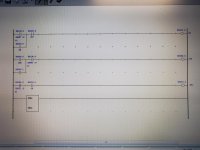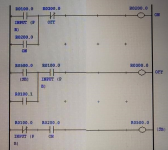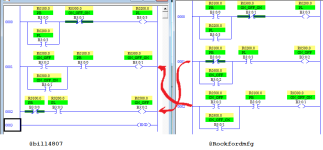Rockfordmfg
Member
I learned this years ago from a Japanese company that I used to work for. It will work on any PLC. If you need it to stay toggled when power is cycled change the first coil to a latch and add an an unlatch to the last rung. Otherwise it resets itself when power is cycled.
PB ON-OFF-0N PL
-] [ ---]\[----------------( )
PL |
-] [--
PB PL ON-OFF
-]\[----------] [----------------( )
ON-OFF |
-] [-------
ON-OFF PB ON-OFF-ON
-] [--------------] [----------------( )
ON-OFF-ON |
-] [-----------
PB ON-OFF-0N PL
-] [ ---]\[----------------( )
PL |
-] [--
PB PL ON-OFF
-]\[----------] [----------------( )
ON-OFF |
-] [-------
ON-OFF PB ON-OFF-ON
-] [--------------] [----------------( )
ON-OFF-ON |
-] [-----------







